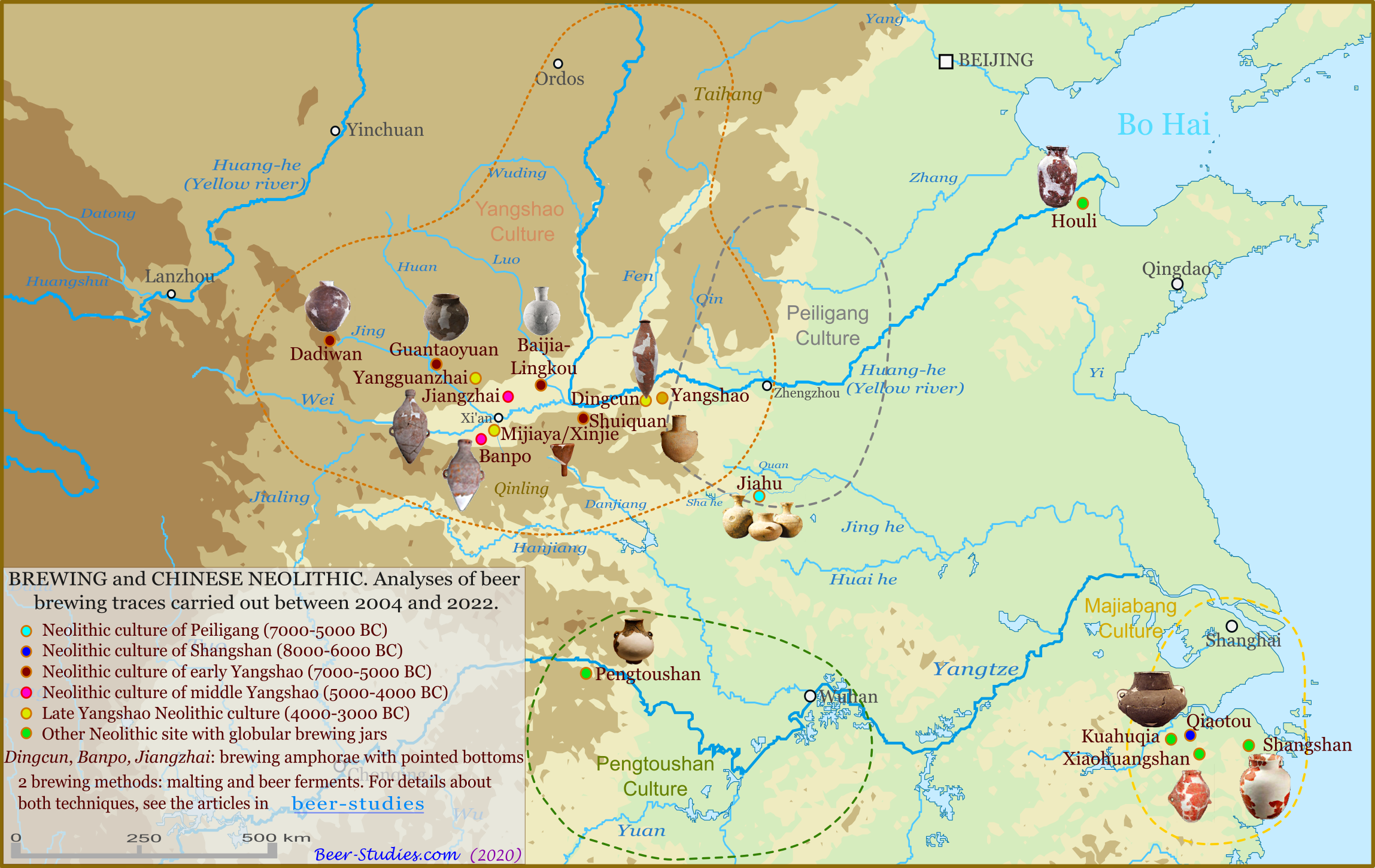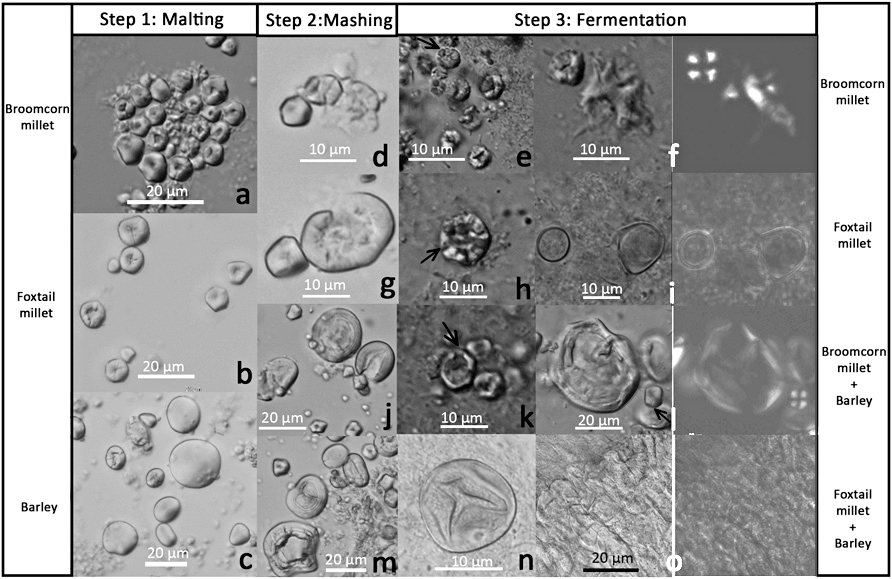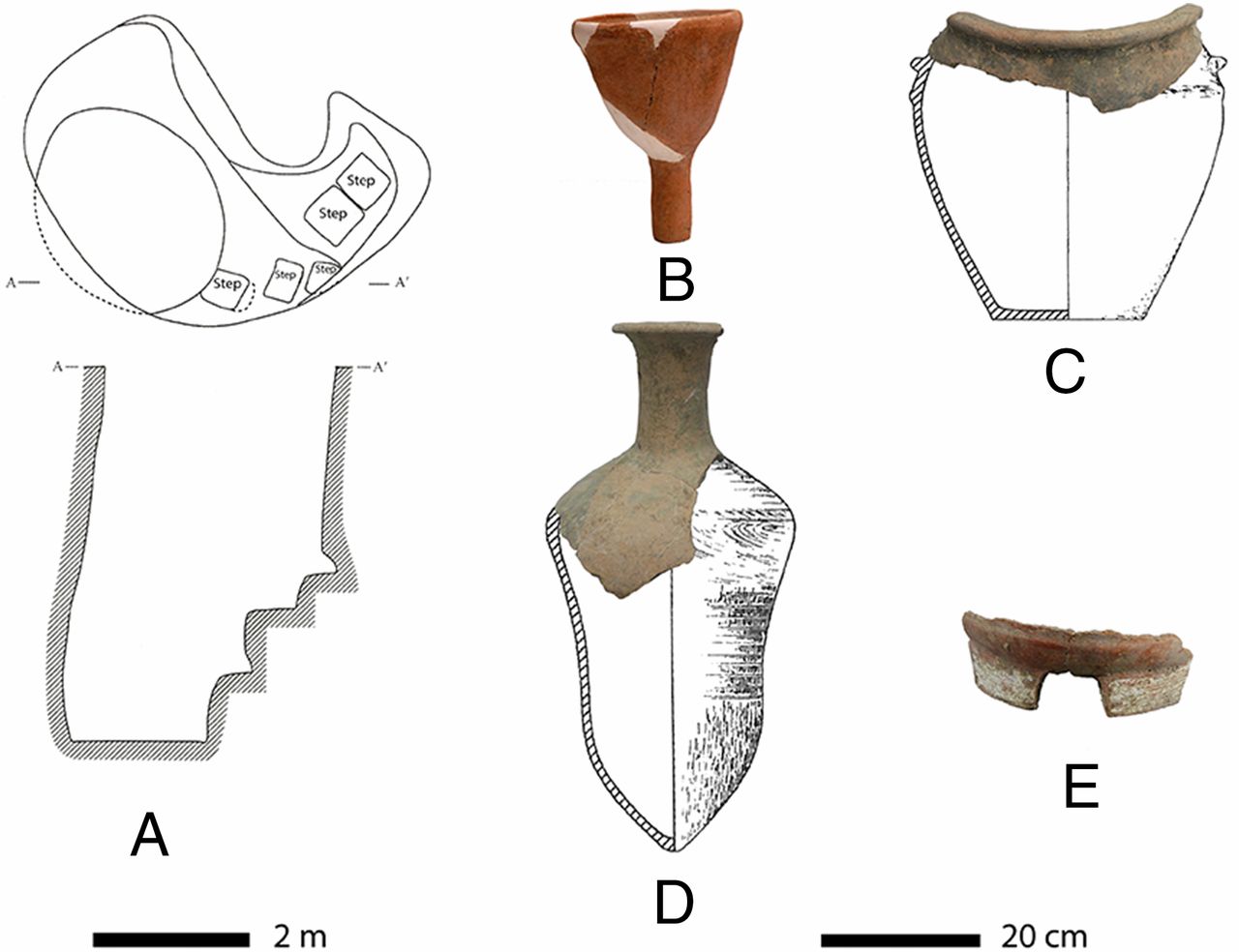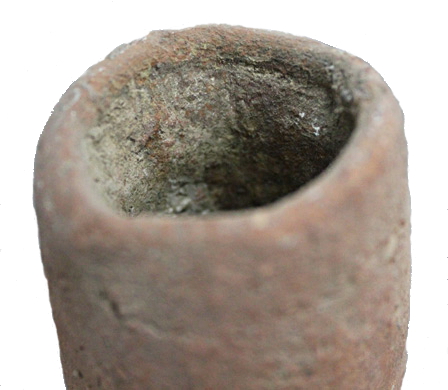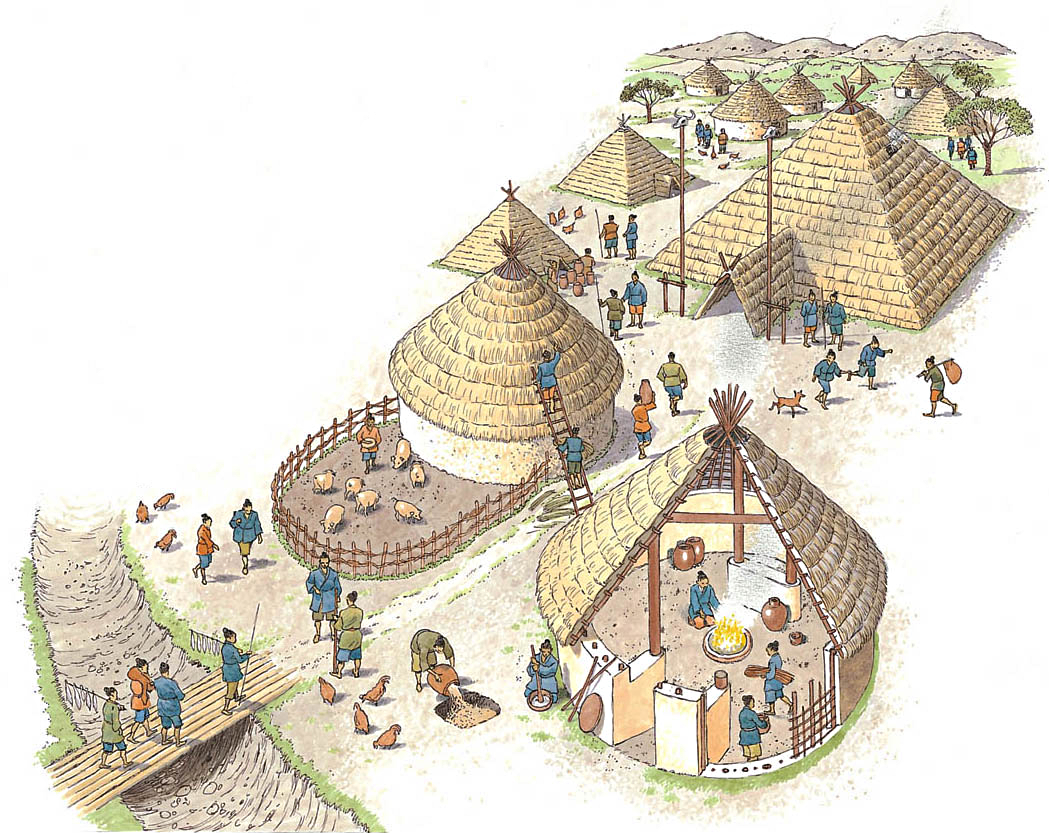The beer in a neolithic village of Mijiaya (China) 5,500 years ago
In 2016, a team of archaeologists has revealed the presence of beer in China 5,500 years ago. They have analysed its composition and described the brewing methods. After the discovery in 2003 of traces of beer brewed in Jiahu 2000 years earlier, the dating of Mijiaya beer is not a scoop. It confirms the ubiquity of beer in northern China in those remote times. On the other hand, this discovery and those that multiplied in the following years draw an increasingly dense map of the archaeological sites witnessing the ancient Chinese brewery[1].
The Mijiaya site on the banks of the river Wei belongs to the final (3500-3000) and eponymous culture of final Yangshao (3500-3000) and to the eponymous culture of Mijiayao (3300-2000) located in the middle basin of the Huang-He river. It is a mixed culture of hunter-gatherers and farmer-breeders. Deer, antelope and beaver are hunted, pigs, dogs, goats and cattle are raised. Millet and hemp found in storage pits are cultivated. The diet is based on broomcorn millet (Panicum miliaceum), common millet and foxtail millet (Setaria italica). The tools are made of stone and terracotta. The villages extend over several dozen hectares, inhabited by groups of a few hundred people. The site of Mijiaya extends over 45 ha. The social organisation seems to be egalitarian according to the funerary deposits but shows two or three levels of hierarchy according to the size of the dwellings. 166 food storage pits have been uncovered. The utilitarian pottery is highly differentiated (pots, jars, bowls, vases, bottles, etc.).
At the same time, regional centres were established along the Wei river (Dadiwan (100 ha) and Gaositou in Gansu, Anban (70 ha) in Shaanxi). In the middle of these sites, large community structures (290 m2 in Dadiwan) shelter ceremonies or festivities. They have large halls with fireplaces. Large jars and stacks of standard size clay bowls or pots have been found there. A more complex social organisation on a regional scale developed towards the 3rd millennium.
Everything is in place for beer to play a central role in these socially evolved Neolithic village communities.
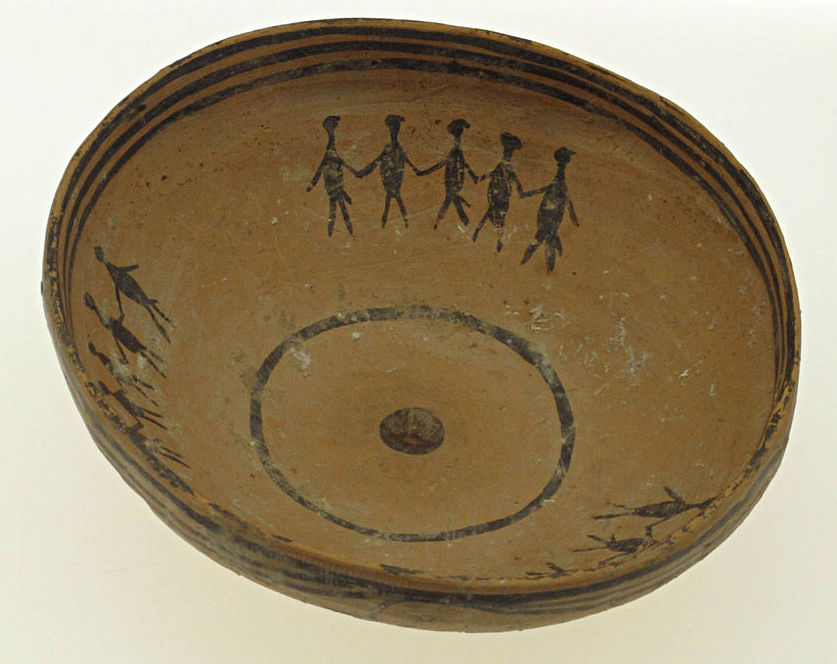 |
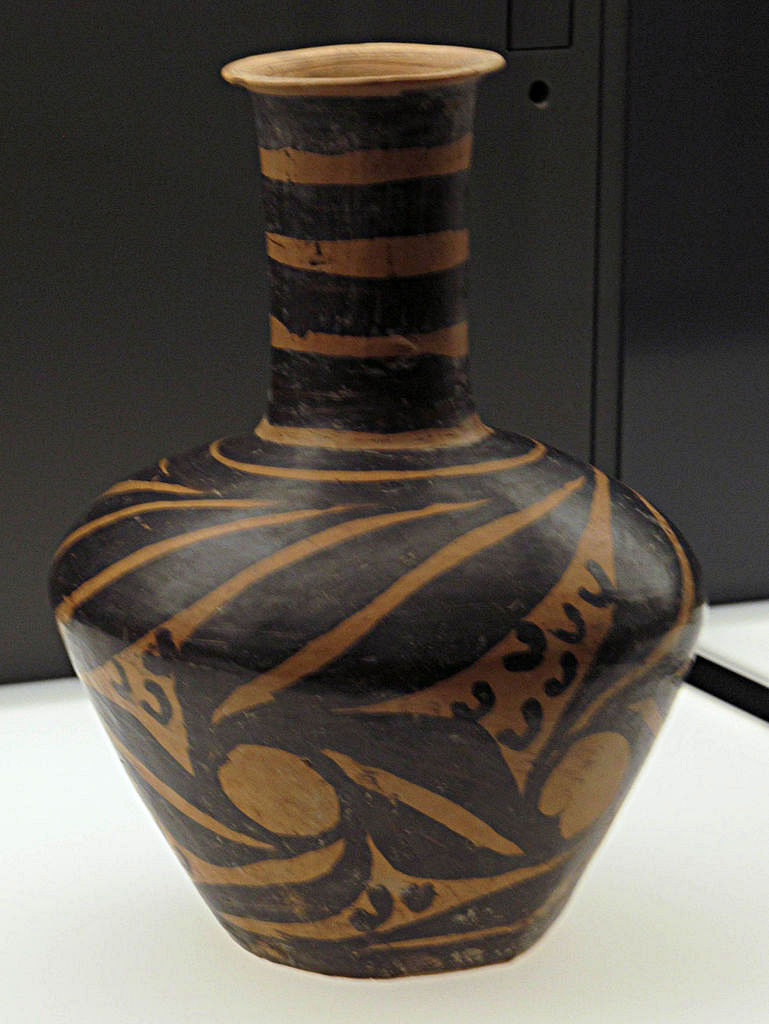 |
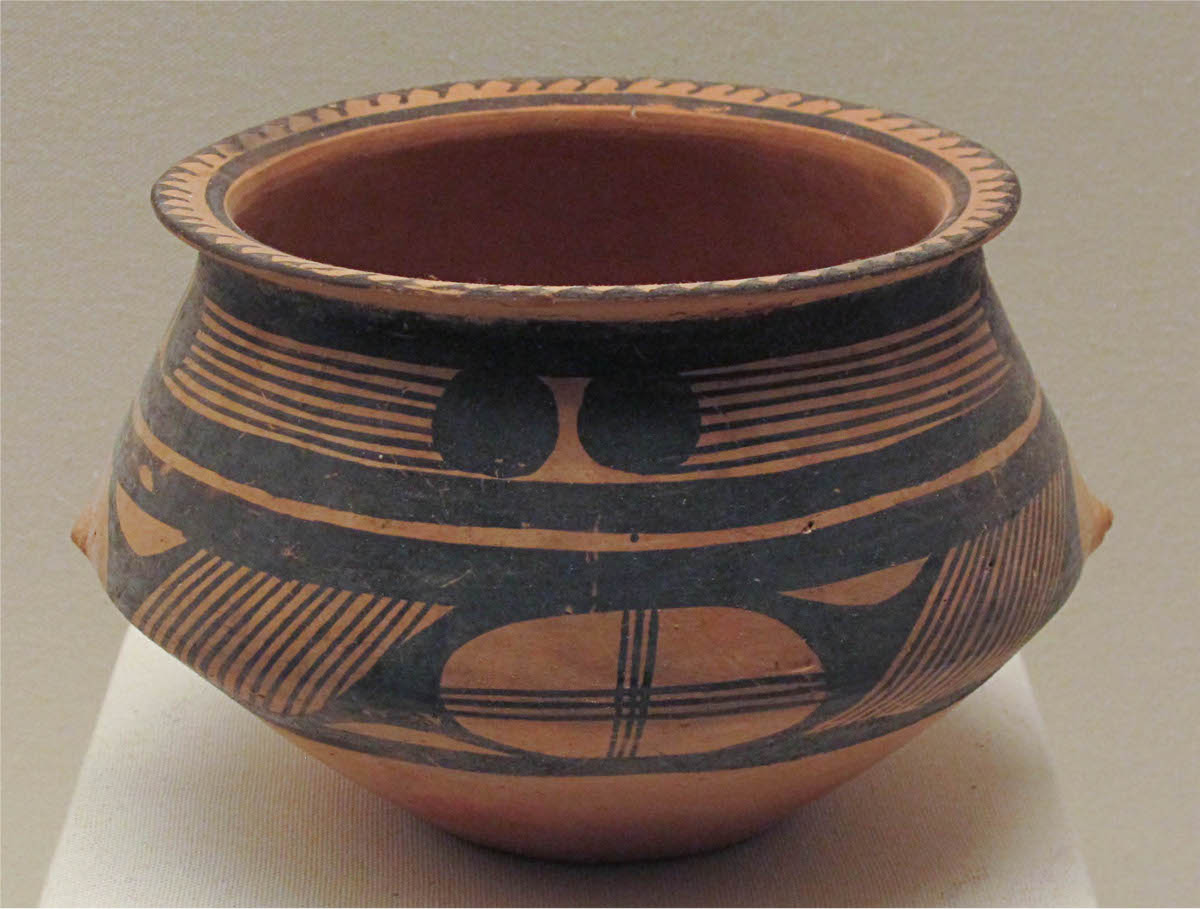 |
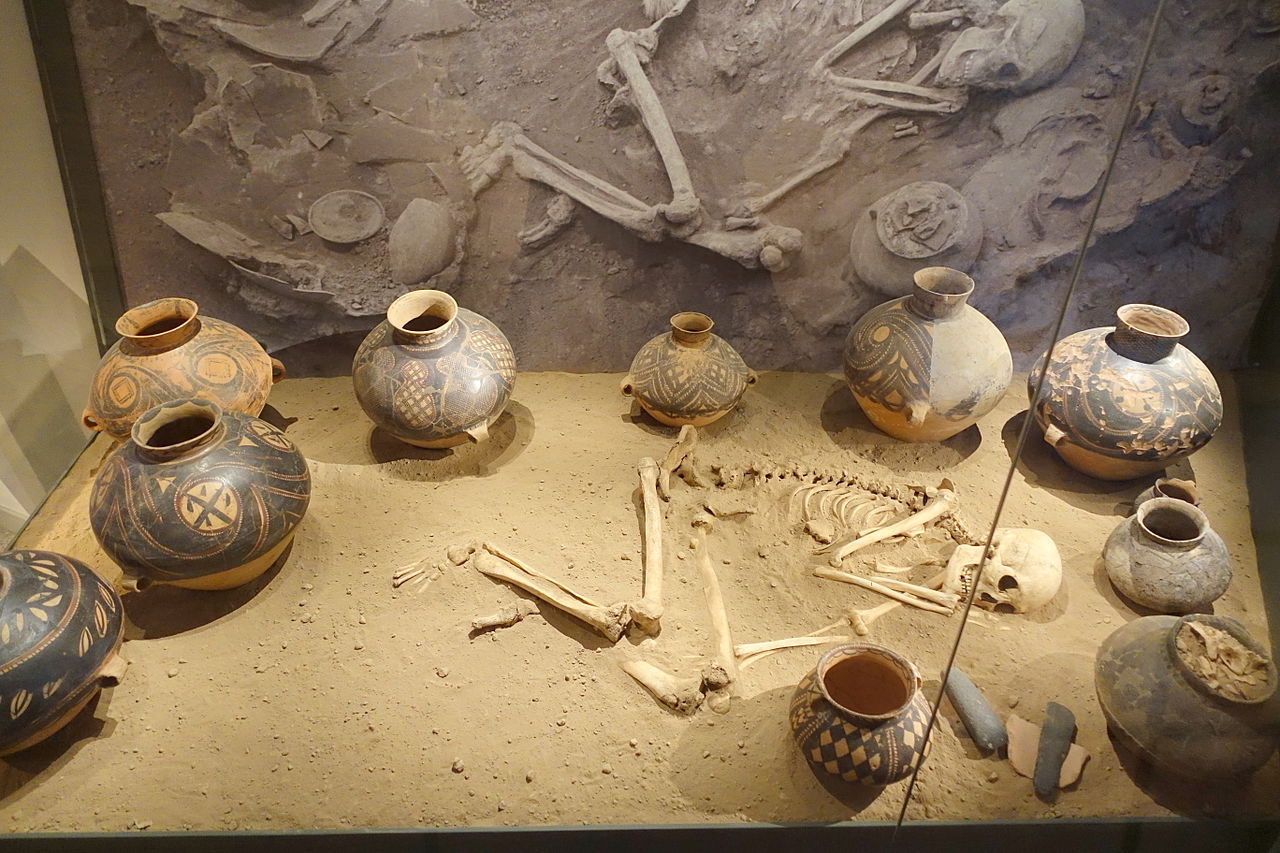 |
| Majiayao-culture. Basin with dancing figures. | Majiayao-culture. Jar with linear design. | Majiayao-culture. Painted earthenwear bowl. | Burial site reconstruction of Bianjiagou, Liaoning province, China. |
The research carried out at Mijiaya has made it possible to validate a scientific method for detecting traces of beer based on the analysis of starch grains and phytoliths. Until then, only calcium oxalate, a marker of the fermentation of cereals, was sought, as at Godin tepe or Jiahu.
The methodology is as follows :
- Experimental brews with a large panel of cereals enable observations of the physical and chemical transformation of their starch granules during the typical phases of brewing (malting, mash brewing, fermentation). The very specific distortions of the granules are recorded with an electron microscope.
- Samples of starch granules are taken and isolated from the archaeological material of Mijiaya.
- Their shapes are compared with the reference data obtained in (1) under microscope and polarizing filters.
- Phytoliths make it possible to identify the plant species analysed.
- Chromatography detects the presence of calcium oxalate, which confirms the existence of alcoholic fermentation of grains.
- Controls to eliminate the potential contaminations of samples taken during excavation.
This 2016 research will bring a wealth of results :
- The beer is brewed with a mixture of millet (P. miliaceum), barley, seeds of Tears of Job (Coix lacryma-jobi), and 3 species of tubers : the « snake-gourd » (Trichosanthes kirilowii), the bulbs from lys (Lilium sp.) and yam (Dioscorea sp.). This confirms the extraordinary diversity of primitive beers. Thye are brewed with all the plants that provide starch, far beyond the narrow circle of cereals.
- It is neither the tubers of lilies nor the "Tears of Job" that are surprising here to make beer, but barley, against all odds. Barley, which came to China from Central Asia around the 4th millennium, became a dominant food cereal much later under the Han dynasty (-206+220). Its presence in northern China 3000 years earlier, alongside millet, seems to indicate a use specific to the brewing of beer in the form of barley malt. It is known that at the same time two main brewing methods were used in China: malting and beer-ferments[2]. The growing of barley in western China during this ancient period could partly be explained by the needs of the brewery.
- The brewing equipment on which the starch samples are taken is specialised: fermentation pots, ovens to dry the germinated grains, funnels, jars to preserve the beer. The 2 pits in which this equipment was found seem to have been places dedicated to brewing beer, some kind of primitive brewing workshops. This denotes a brewing technique that was already well developed in China in those early days. Traces of beer found in the burial deposits of Jiahu, 300 km to the east, indicated the presence of beer 2000 years earlier. The archaeological context of Jiahu does not make it possible to affirm that beer brewing was a regular economic or domestic activity around 7000 years ago. But on the site of Mijiaya, the manufacture of beer has became part of a generalised use of fermented drinks: food production, economic exchanges, religious activities.
The conclusions of this discovery are of great interest for the history of the brewery. The researchers sum up them as follows :
« The practice of beer brewing is likely to have been associated with the increased social complexity in the Central Plain during the fourth millennium BC The late Yangshao period in the Wei River region was characterized by hierarchically organized settlement patterns, interpolity competitions, construction of large public architectures at regional centers, and ritual feasting likely organized by elite individuals and involving alcohol consumption. Like other alcoholic beverages, beer is one of the most widely used and versatile drugs in the world, and it has been used for negotiating different kinds of social relationships. The coincidence of beer production with other lines of material evidence suggests that competitive feasting was actively developing. The production and consumption of Yangshao beer may have contributed to the emergence of hierarchical societies in the Central Plain, the region known as “the cradle of Chinese civilisation.»[3]
[1] Wang Jiajing, Liu Li & al. Revealing a 5,000-y-old beer recipe in China., PNAS-2016-Wang-6444-8. PNAS-2016-Wang-6444-8.
[2] Several other brewing methods exist: insalivation and acid saccharification of starch grains. But these methods are more tricky to detect and separate from other methods on archaeological artefacts. The same applies to amylolytic roots which can hydrolyse starch. Given the extraordinary diversity of ancient Chinese cuisine, it would be surprising if the properties of such roots were not discovered and used to make beer by human groups in China during and after the Neolithic period.
[3] Quote from Wang Jiajing, Liu Li & al. 2016, 6447.



